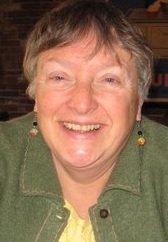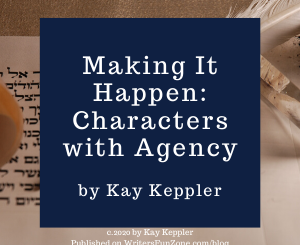Lift Your Story with Character Archetypes by Kay Keppler
 Let’s welcome back monthly columnist, editor, and novelist, Kay Keppler, as she shares with us how to “Lift Your Story with Character Archetypes.” Enjoy! An insightful article for first-time and experienced fiction writers!
Let’s welcome back monthly columnist, editor, and novelist, Kay Keppler, as she shares with us how to “Lift Your Story with Character Archetypes.” Enjoy! An insightful article for first-time and experienced fiction writers!
***
Some books are easier to write than others.
Some stories “write themselves,” while others seem uninspired or difficult to finish. Why is that?
Got Archetypes?
One reason a story might feel flat is that it doesn’t have the character archetypes that most readers expect—even subconsciously—to find.
Archetypes aren’t stereotypes, but rather characters with recurring elements that figure into the heroic tales of almost every culture. Readers recognize these archetypes and look for them—and are disappointed if they can’t find them.
A recent Story Grid podcast had an interesting idea about certain types of archetypes. Two of these archetypes—the hero and adversary—are topics on their own. But four others can add depth and texture to your stories.
Order and Chaos
According to the podcast speakers, Tim Grahl and Shawn Coyne (writer and editor, respectively), all stories should have “two poles of order” and “two poles of chaos.” That is, each story should have characters that represent the opposite ends of a goal spectrum—order and chaos—and both order and chaos should have two “poles,” which are in themselves opposites.
The Two Poles of Order
How can a person, government, or story achieve order?
In our story structure, order is inhabited by the archetypes Wise King and Tyrant (the “two poles”).
The Wise King
Think Obi Wan Kenobi here. The Wise King believes that everyone has the potential to improve or create. He has a core of knowledge and beliefs that ground him when turmoil erupts, and he shares that understanding with those who share the burden.
The Tyrant
When faced with turmoil, the Tyrant assumes control and imposes order with an iron fist. Those ruled by him receive security at the price of freedom. The Tyrant believes that resources are finite, so he grabs them for himself and those who support him, thus reinforcing his position.
Conflicting Views
The poles reflect opposing ideas for the same goal: Both the Wise King and Tyrant produce order, but they endorse different philosophies.
Your story does not need a single character to reflect each archetype. An archetype could be represented by an institution (say, a prison for “Tyrant” or a university for “Wise King”), a story symbol, societal constraint, or totem, or embodied in a character who plays another role, as well.
The Two Poles of Chaos
On the other end of the goal spectrum, Chaos is inhabited by the Creative Force of Nature and the Destructive Force of Nature, which are often literally the forces of nature. They provide an opportunity for action.
The Creative Force of Nature
We’ve all seen nature’s power and its potential for good: the sun warms us; rain nourishes us. In story terms, think of Glinda the Good Witch in The Wizard of Oz. When Dorothy and her friends fall asleep in the poppy fields before they get to Oz, Glinda makes it snow, giving them an opportunity to escape.
The Destructive Force of Nature
But nature can be destructive, too. Think of Alfred Hitchcock’s film The Birds, based on a short story by Daphne du Maurier. Nature—the birds—creates danger and instills fear, giving the characters opportunities to take action.
Pick a Lane and Stay There
To make the archetype work, you need to establish a character in one of these poles and keep them there, always behaving in accordance with the nature of the archetype. The reader will know if your character strays.
One caveat here: The hero and the adversary can navigate between the worlds of order and chaos. In the Harry Potter universe, Harry, the hero, navigates between Ron, who represents chaos, and Hermione, who represents order. In Star Trek, Spock is order, McCoy is chaos, and Kirk navigates between them. Together, they are complete.
Organize Your Characters
Readers are reassured by rediscovering certain story elements, but writing archetypes helps you, the writer, as well—both structurally and creatively.
Archetypes provide a springboard
When you stall in the writing of your story, as surely you will at some point, review: In which domain does this character reside? Order or chaos? If chaos, think about what trouble you’ve already put this character in, or what trouble that character has caused. Build on that, especially in terms of something readers might not expect, but that remains consistent with the character’s chaos domain and their previous actions.
Archetypes set limitations
By assigning domains to your characters, you narrow each character’s focus, helping you establish the goals, needs, and wants of each character and letting you put your writing effort where it will be the most effective. Your character can’t be both a mediator and a hothead—s/he can’t be both in the order and chaos domains. Once you choose a place for each character, their actions are bound to what is appropriate for that domain.
Go Further
Using archetypes to build your characters can help you define their goals and make them strong and consistent. Many resources are available to help you. Try this technique and see if it improves your story development.
***
ABOUT THE AUTHOR
Kay Keppler is an author Zero Gravity Outcasts, Betting on Hope, Gargoyle: Three Enchanting Romance Novellas, and editor of fiction and nonfiction –Angel’s Kiss and Outsource It!
is an author Zero Gravity Outcasts, Betting on Hope, Gargoyle: Three Enchanting Romance Novellas, and editor of fiction and nonfiction –Angel’s Kiss and Outsource It!
She lives in northern California. Contact her here at Writer’s Fun Zone in the comments below, or at kaykeppler@yahoo.com to ask questions, suggest topics, or if you prefer, complain.






